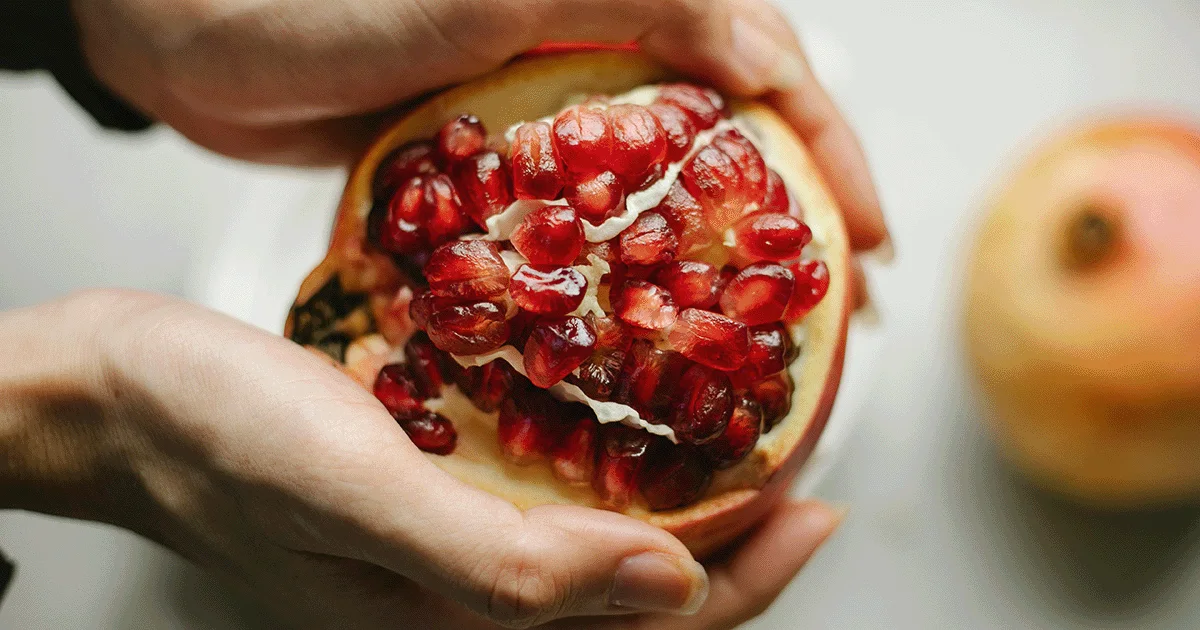Here's what we'll cover
Here's what we'll cover
Here's what we'll cover
Aphrodisiacs have been around forever. Medical texts from ancient India, China, and Egypt each proclaim the sexual benefits of dozens of practices and products. They recommend everything from fresh unfiltered honey to alligator testicles to get your mojo rising. And while the list of aphrodisiacs varies across cultures, the drive to attain peak sexual performance remains the same.
What is an aphrodisiac?
An aphrodisiac is any “food, drink, or drug that arouses sexual desire,” according to the Oxford English Dictionary. Honestly, it’s a broad definition that allows some wiggle room. But generally, aphrodisiacs are thought of as sex-enhancing foods and potent tonics or potions. The only problem is, how do you measure increased arousal? What are the criteria for “successful” aphrodisiacs?
Unfortunately, the majority of aphrodisiac claims are exaggerated, to say the least. However, there are some interesting medical findings for a handful of sexy enhancers. It seems that some aphrodisiacs are more than just snake oil. Here’s a medical deep dive into the outlandish claims, potential benefits, and flat out myths that surround the world’s most popular (and unexpected) aphrodisiacs.
The origin of aphrodisiacs
In case you’ve forgotten your classical Greek, the word “aphrodisiac” comes from Aphrodite, the Greek goddess of sexual love and beauty. Her name derives from “aphros,” the Greek word for foam, and relates to her oddly graphic origin story. According to Greek myth, Aphrodite was “born from the foam,” created when Cronus (Zeus’s dad) cut off Uranus’s genitals (Zeus’ grandpa) and threw the genitals into the sea. That’s how potent Uranus was. Not quite the romantic origin story you were expecting, huh?
Strangely enough, this violent beginning to Aphrodite is actually perfectly in line with some of the less conventional aphrodisiacs that have popped up over the centuries.
Historical aphrodisiacs
Aphrodisiacs have come in all shapes and sizes through the ages (Shah, 2002). In the 8th century BCE, Samhita of Sushruta claimed that “Clarified butter should be boiled with eggs or testes of alligators, mice, frogs and sparrows,” and that if a man lubricates the soles of his feet with this mixture, he’d “be able to visit a woman with undiminished vigor as long as he would not touch the ground with his feet.”
The Huang-Ti Nei-Ching, a traditional Chinese medical text from 2600 BCE, lists an aphrodisiac potion with 22 ingredients that the emperor drank before “he mounted 1,200 women and achieved immortality” (Li, 1974).
Other historical aphrodisiacs include:
Ancient Egyptians smeared a crocodile heart mixture on the penis
Greek philosopher, Pliny, claimed that mandrake root increased potency because it looks like female genitals
The ancient Chinese ate the sexual organs of animals
Romans sometimes consumed the semen of young men thinking to transfer “youthful virility”
Seafood and shellfish (particularly oysters) have been revered as aphrodisiacs for centuries, in part because of their connection to “seafoam born” Aphrodite
Casu marzu, aka rotting cheese, riddled with maggots is an aphrodisiac in Sardinia
Durian—one of the smelliest fruits in the world—tops the aphrodisiac list in Southeast Asia
Poachers sell ground up rhino horns to men in Africa (and beyond) to increase potency despite all evidence to the contrary
But what does medical science have to say about all these claims? Are there any real benefits to these traditional aphrodisiacs? The surprising answer is—maybe. Here’s a look at four examples of the (potential) scientific benefits of aphrodisiacs.
Oysters: zinc surprisingly sexy
When you say “aphrodisiac,” most people picture oysters. Casanova himself reportedly ate 50 raw oysters for breakfast to maintain his virility and stamina, so it must be true, right (West, 2015)? Actually, the science is surprisingly positive when it comes to these burlesque bivalves—particularly in regard to nutrition and sexual health.
Oysters are rich in zinc, which is essential for sexual maturation and sperm development. Raw oysters also contain two amino acids, D-aspartic acid and N-methyl D-aspartic acid (NMDA), which may be associated with increased sex hormone levels (at least in animals) (Roshanzamir, 2017).
Chocolate: mostly just delicious
Chocolate has always held a special place in our hearts as an aphrodisiac and an overall mood enhancer. Valentine’s Day hinges on chocolate hearts for a reason. And while there’s no shortage of research showing the cardiovascular health benefits of cocoa (sorry, dark chocolate only), there isn’t much evidence for chocolate as an aphrodisiac.
One study of Northern Italian women compared the Female Sexual Function Index (FSFI) of daily chocolate eaters to women who didn’t eat chocolate every day. Sounds good so far, right? Not so much. Researchers didn’t find any significant difference between the sexual function of the 153 women (Salonia, 2006).
Chili peppers: heating up the bedroom
Chili peppers are thought to “awaken” sexual desire and potency. And there may actually be something to that sensational rush. Capsaicin, the active ingredient in peppers that’s responsible for the feeling of heat, also triggers facial flushing, rapid heart rate, and sweating—all things that we associate with sexual arousal.
Chili peppers (capsaicin) made rats ejaculate more often, but also “prematurely.” One study showed that capsaicin improved sexual behavior in male rats (Pelayo, 2017). Specifically, the study showed that capsaicin reduced refractory period times—the period of time after ejaculation and before the next sexual encounter—which can be a good thing. However, one potential side effect of the study was that capsaicin decreased their ejaculatory threshold—aka they came faster.
Again, there’s never been any research showing that chili peppers improve human “mojo,” but if you’re a rat, the outcome looks interesting.
Red ginseng and maca
Despite the unscientific claims of many aphrodisiacs, some herbs and supplements may actually improve various aspects of sexual function. Red ginseng shows promising benefits for erectile dysfunction (as measured by subjective questionnaires) and maca (a turnip-sized root from Peru) may be able to boost sexual desire in both men and women (Jang, 2008; Shin, 2010).
While red ginseng and maca show promise, the sample sizes and methodologies on studies for both of these supplements aren’t large enough or rigorous enough to draw hard conclusions yet.
Aphrodisiacs: above and beyond placebo
Despite the murky science and the fantastic claims, there’s an interesting thing about aphrodisiacs—sometimes they work. It’s easy to chalk it up to the placebo effect, which can work even when you know you’re taking a placebo (Locher, 2017). But there may be more to it than that.
When we associate certain actions with sex—like eating chocolate—the behavior becomes something more. This association with foreplay, intimacy, or sex transforms an everyday item into something like a personalized drug. For you, the taste or smell of the chocolate (or other food or drink) becomes inextricably linked with sex. And for all intents and purposes, that’s how your body perceives it.
Anything can be an aphrodisiac if you treat it like one.
DISCLAIMER
If you have any medical questions or concerns, please talk to your healthcare provider. The articles on Health Guide are underpinned by peer-reviewed research and information drawn from medical societies and governmental agencies. However, they are not a substitute for professional medical advice, diagnosis, or treatment.
References
Jang, D. J., Lee, M. S., Shin, B. C., Lee, Y. C., & Ernst, E. (2008). Red ginseng for treating erectile dysfunction: a systematic review. British Journal of Clinical Pharmacology, 66 (4), 444–450. doi: 10.1111/j.1365-2125.2008.03236.x. Retrieved from https://www.ncbi.nlm.nih.gov/pubmed/18754850
Li, C. L. (1974). A Brief Outline of Chinese Medical History with Particular Reference to Acupuncture. Perspectives In Biology and Medicine, 18 (1), 132–143. doi: 10.1353/pbm.1974.0013. Retrieved from https://www.semanticscholar.org/paper/A-Brief-Outline-of-Chinese-Medical-History-with-to-Li/3a40d3c886875eb863b85a767ea6f4120aed80e0
Locher, C., Nascimento, A. F., Kirsch, I., Kossowsky, J., Meyer, A., & Gaab, J. (2017). Is the rationale more important than deception? A randomized controlled trial of open-label placebo analgesia. Pain, 158 (12), 2320–2328. doi: 10.1097/j.pain.0000000000001012. Retrieved from https://www.ncbi.nlm.nih.gov/pubmed/28708766
Pelayo, L., Carro-Juárez, M., Hernández-Hernández, F., Trujillo, X., Trujillo-Hernández, B., & Huerta, M. (2017). PNM-06 Capsaicin Improves Sexual Behavior in Male Rat. The Journal of Sexual Medicine, 14 (12). doi: 10.1016/j.jsxm.2017.10.053. Retrieved from https://www.jsm.jsexmed.org/article/S1743-6095(17)31519-9/fulltext
Roshanzamir, F., & Safavi, S. M. (2017). The putative effects of D-Aspartic acid on blood testosterone levels: A systematic review. International Journal of Reproductive BioMedicine, 15 (1), 1–10. doi: 10.29252/ijrm.15.1.1. Retrieved from https://www.ncbi.nlm.nih.gov/pubmed/28280794
Salonia, A., Fabbri, F., Zanni, G., Scavini, M., Fantini, G. V., Briganti, A., Naspro, R., Parazzini, F., Gori, E., Rigatti, P., Montorsi, F. (2006). ORIGINAL RESEARCH—WOMENS SEXUAL HEALTH: Chocolate and Womens Sexual Health: An Intriguing Correlation. The Journal of Sexual Medicine, 3 (3), 476–482. doi: 10.1111/j.1743-6109.2006.00236.x. Retrieved from https://www.sciencedirect.com/science/article/abs/pii/S1743609515313448
Shah, J. (2002). Erectile dysfunction through the ages. BJU International, 90 (4), 433–441. doi: 10.1046/j.1464-410x.2002.02911.x. Retrieved from https://bjui-journals.onlinelibrary.wiley.com/doi/full/10.1046/j.1464-410X.2002.02911.x
Shin, B.-C., Lee, M. S., Yang, E. J., Lim, H.-S., & Ernst, E. (2010). Maca (L. meyenii) for improving sexual function: a systematic review. BMC Complementary and Alternative Medicine, 10 (1). doi: 10.1186/1472-6882-10-44. Retrieved from https://www.ncbi.nlm.nih.gov/pubmed/20691074
West, E., & Krychman, M. (2015). Natural Aphrodisiacs—A Review of Selected Sexual Enhancers. Sexual Medicine Reviews, 3 (4), 279–288. doi: 10.1002/smrj.62. Retrieved from https://www.ncbi.nlm.nih.gov/pubmed/27784600










